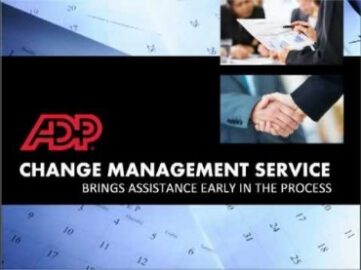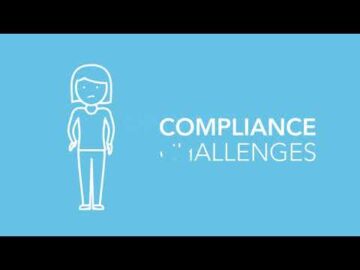
Accumulated Depreciation is what’s known as a “contra account,” or more specifically, a “contra-asset account.” Contra accounts are used to offset other accounts. In this case, Accumulated Depreciation is used to offset Equipment. 10 × actual production will give the depreciation cost of the current year. Suppose an asset has original cost $70,000, salvage value $10,000, and is expected to produce 6,000 units. Need an easy way to keep track of your small business’s transactions? Patriot’s online accounting software lets you complete your books in a few simple steps.

Instead of realizing the entire cost of an asset in year one, companies can use depreciation to spread out the cost and match depreciation expenses to related revenues in the same reporting period. This allows a company to write off an asset’s value over a period of time, notably its useful life. Accumulated depreciation is the total amount of depreciation of a company’s assets, while depreciation expense is the amount that has been depreciated for a single period. Depreciation is an accounting entry that represents the reduction of an asset’s cost over its useful life.
What is Depreciation Expense?
A qualifying disposition is one that does not involve all the property, or the last item of property, remaining in a GAA and that is described by any of the following. However, these rules do not apply to any disposition described later under Terminating GAA Treatment. The following examples are provided to show you how to use the percentage tables. Basis adjustment due to recapture of clean-fuel vehicle deduction or credit.
Atmos Energy Corporation Reports Earnings for Fiscal 2023 Third Quarter; Reaffirms Fiscal 2023 Guidance – Yahoo Finance
Atmos Energy Corporation Reports Earnings for Fiscal 2023 Third Quarter; Reaffirms Fiscal 2023 Guidance.
Posted: Wed, 02 Aug 2023 20:36:00 GMT [source]
In June 2018, Ellen Rye purchased and placed in service a pickup truck that cost $18,000. Ellen used it only for qualified business use for 2018 through 2021. Ellen claimed a section 179 deduction of $10,000 based on the purchase of the truck. Ellen began depreciating it using the 200% DB method over a 5-year GDS recovery period.
How Are Assets Depreciated for Tax Purposes?
If your property has a carryover basis because you acquired it in a nontaxable transfer such as a like-kind exchange or involuntary conversion, you must generally figure depreciation for the property as if the transfer had not occurred. However, see Like-kind exchanges and involuntary conversions, earlier, in chapter 3 under How Much Can You Deduct; and Property Acquired in a Like-kind Exchange or Involuntary Conversion next. You multiply the reduced adjusted basis ($288) by the result (40%).
- Using the straight-line method of depreciation, the depreciation expense to be reported on each of the company’s monthly income statements is $1,000 ($480,000 divided by 480 months).
- One half of a full period’s depreciation is allowed in the acquisition period (and also in the final depreciation period if the life of the assets is a whole number of years).
- The sum-of-the-years digits method is an example of depreciation in which a tangible asset like a vehicle undergoes an accelerated method of depreciation.
- Accumulated depreciation is the total amount of depreciation of a company’s assets, while depreciation expense is the amount that has been depreciated for a single period.
- However, if the property is specifically listed in Table B-2 under the type of activity in which it is used, you use the recovery period listed under the activity in that table.
An addition to or partial replacement of property that adds to its value, appreciably lengthens the time you can use it, or adapts it to a different use. An intangible property such as the advantage or benefit received in property beyond its mere value. It is not confined to a name but can also be attached to a particular area where business is transacted, to a list of customers, wisely pay by adp paycard 2020 or to other elements of value in business as a going concern. Travel between a personal home and work or job site within the area of an individual’s tax home. The Taxpayer Bill of Rights describes 10 basic rights that all taxpayers have when dealing with the IRS. Go to TaxpayerAdvocate.IRS.gov to help you understand what these rights mean to you and how they apply.
You did not elect a section 179 deduction and elected not to claim any special depreciation allowance for the 5-year property. You used the car exclusively for business during the recovery period (2016 through 2021). On February 1, 2020, Larry House, a calendar year taxpayer, leased and placed in service an item of listed property with an FMV of $3,000. Larry does not use the item of listed property at a regular business establishment, so it is listed property. Larry’s business use of the property (all of which is qualified business use) is 80% in 2020, 60% in 2021, and 40% in 2022. Larry must add an inclusion amount to gross income for 2022, the first tax year Larry’s qualified business-use percentage is 50% or less.
Depletion and amortization are similar concepts for natural resources (including oil) and intangible assets, respectively. Remember, the percentage you can deduct with bonus depreciation changes each year. Make sure you check in with the official website of Section 179 to get the most up-to-date information. So, if you spent $4,550,000 on assets, you went $500,000 over the Section 179 spending limit. You also cannot use Section 179 to deduct more in one year than your net taxable business income. To claim Section 179, you must use the property more than 50% of the time during regular business operations.
Double declining balance depreciation
The straight-line depreciation is calculated by dividing the difference between assets pagal sale cost and its expected salvage value by the number of years for its expected useful life. The choice of depreciation method is governed by the distribution of the economic benefit of using the asset. If most of the benefit arises in the early years then an accelerated depreciation method is best. If the benefit falls evenly over the life of the asset then the straight line depreciation method is best.
If you put an addition on the home and place the addition in service this year, you would use MACRS to figure your depreciation deduction for the addition. You can take a special depreciation allowance to recover part of the cost of qualified property (defined next) placed in service during the tax year. The allowance applies only for the first year you place the property in service. The allowance is an additional deduction you can take after any section 179 deduction and before you figure regular depreciation under MACRS for the year you place the property in service.

It estimates the per-unit depreciation cost and allocates it based on the total units produced. Another GAAP-accepted method of depreciation is the units of production method. Under the units of production method, the rate at which an asset is depreciated is not a function of time, but rather a function of how much the asset is used. The composite method is applied to a collection of assets that are not similar and have different service lives. For example, computers and printers are not similar, but both are part of the office equipment. Depreciation on all assets is determined by using the straight-line-depreciation method.
Cash Flow Statement
In 2022, Beech Partnership placed in service section 179 property with a total cost of $2,750,000. The partnership must reduce its dollar limit by $50,000 ($2,750,000 − $2,700,000). Its maximum section 179 deduction is $1,030,000 ($1,080,000 − $50,000), and it elects to expense that amount. The partnership’s taxable income from the active conduct of all its trades or businesses for the year was $1,030,000, so it can deduct the full $1,030,000. It allocates $40,000 of its section 179 deduction and $50,000 of its taxable income to Dean, one of its partners. On February 1, 2022, the XYZ Corporation purchased and placed in service qualifying section 179 property that cost $1,080,000.
- If you only looked at Table B-1, you would select asset class 00.3, Land Improvements, and incorrectly use a recovery period of 15 years for GDS or 20 years for ADS.
- You do not elect a section 179 deduction and none of these items is qualified property for purposes of claiming a special depreciation allowance.
- Accumulated depreciation is recorded in a contra asset account, meaning it has a credit balance, which reduces the gross amount of the fixed asset.
- This is also true for a business meeting held in a car while commuting to work.
The applicable convention establishes the date property is treated as placed in service and disposed of. Depreciation is allowable only for that part of the tax year the property is treated as in service. The recovery period begins on the placed in service date determined by applying the convention.
The election must be made separately by each person acquiring replacement property. In the case of a partnership, S corporation, or consolidated group, the election is made by the partnership, by the S corporation, or by the common parent of a consolidated group, respectively. Once made, the election may not be revoked without IRS consent. You reduce the adjusted basis ($288) by the depreciation claimed in the fourth year ($115) to get the reduced adjusted basis of $173.
This is computer software that is readily available for purchase by the general public, is subject to a nonexclusive license, and has not been substantially modified. It includes any program designed to cause a computer to perform a desired function. However, a database or similar item is not considered computer software unless it is in the public domain and is incidental to the operation of otherwise qualifying software. The treatment of property as tangible personal property for the section 179 deduction is not controlled by its treatment under local law.
What is the difference between depreciation expense and accumulated depreciation?
To figure depreciation on passenger automobiles in a GAA, apply the deduction limits discussed in chapter 5 under Do the Passenger Automobile Limits Apply. Multiply the amount determined using these limits by the number of automobiles originally included in the account, reduced by the total number of automobiles removed from the GAA, as discussed under Terminating GAA Treatment, later. Instead of using the above rules, you can elect, for depreciation purposes, to treat the adjusted basis of the exchanged or involuntarily converted property as if disposed of at the time of the exchange or involuntary conversion.
Debit the difference between the two to accumulated depreciation. Under the composite method, no gain or loss is recognized on the sale of an asset. Theoretically, this makes sense because the gains and losses from assets sold before and after the composite life will average themselves out.
